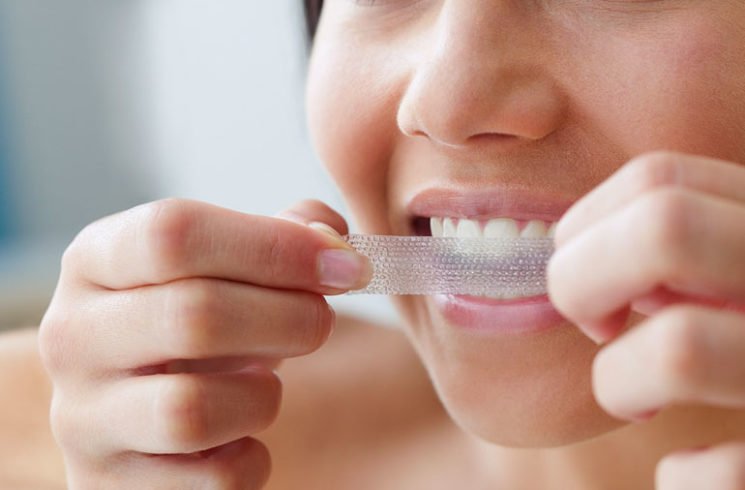Is Teeth Whitening Safe?
Orignal article can be found here.
How to use teeth bleaching products safely
Nobody wants to be famous for their pearly yellows. But recent research suggests there might be a downside to popular teeth whitening strips and gels.
Are they really a safe way to brighten your smile? Dentist Anne Clemons, DMD, breaks it down.
Teeth bleaching and dentin damage
You’ve probably seen them (or even used them): Sticky strips or gel-filled trays designed to whiten your teeth with hydrogen peroxide. They’re easily available over-the-counter, and they can do a great job lightening teeth and removing stains, Dr. Clemons says.
Now for the “but” (you knew it was coming): Hydrogen peroxide products might damage proteins in the tooth’s dentin layer, according to study results presented at the 2019 meeting of the American Society for Biochemistry and Molecular Biology. Dentin is the hard tissue that lies beneath the tooth’s surface enamel.
Whitening damage — harmful for tooth health?
Earlier research has shown that whitening products might also roughen or soften the tooth’s surface, Dr. Clemons says. But there’s a caveat. “These studies were done in a lab, not on living teeth,” she says.
It’s possible that the changes are temporary and could reverse after a person stops using teeth bleaching products. Even if the changes stick around, though, it’s not clear that they equal bad news for your choppers.
Do these changes matter?
“We don’t know yet whether this is something that will have a long-term effect on tooth health,” Dr. Clemons says.
Safe steps to whiter teeth
Now for some reassurance. Hydrogen peroxide bleaching products have been around for decades, and millions of people use them — including plenty of dentists, Dr. Clemons points out. “And we haven’t seen an increase in problems like cavity risk or tooth fractures after bleaching,” she says.
The American Dental Association (ADA) has also said that hydrogen peroxide whiteners are safe and effective.
If you do use them, here’s how to do so safely, Dr. Clemons says:
- Look for the ADA seal of approval. You’ll find it on whitening toothpastes and teeth bleaching products that have been found safe and effective in independent tests.
- Follow the instructions. Some products are designed to be used once a day, while others can be used twice a day. Some you use for a week, some for two … you get the idea. To protect your teeth, be sure to follow the product’s instructions.
- See your dentist. “Ask your dentist if these products are right for you,” Dr. Clemons says. Bleaching products work best on teeth that have yellowed with aging, or teeth that are stained from food and drink (looking at you, coffee and red wine). But brown or gray discoloration could signal problems that a bleaching kit won’t fix. It’s also important to tackle concerns like gum disease or cavities before starting a bleaching treatment. “Your dentist can also recommend the best product for you, and make sure you’re doing it right,” she says.
- Listen to your teeth. Some people develop temporary sensitivity in the gums or teeth when using whitening products. That’s not a sign of long-term damage, but it can be uncomfortable. If it happens to you, consider taking a break from bleaching or switching to a milder product. Again, talk to your dentist for the right advice.
Avoid stains in the first place
One more piece of advice from Dr. Clemons: Take steps to keep teeth sparkling so you won’t have to use teeth bleaching products so often.
- Brush thoroughly twice a day (and don’t forget to floss).
- Quit smoking.
- Limit stain offenders like coffee, tea and red wine.
- Go for regular dental cleanings to remove plaque and surface stains.
Bottom line, says Dr. Clemons:
“If you want a brighter smile, teeth whitening products can be good tools — but they aren’t a substitute for good dental hygiene.”

